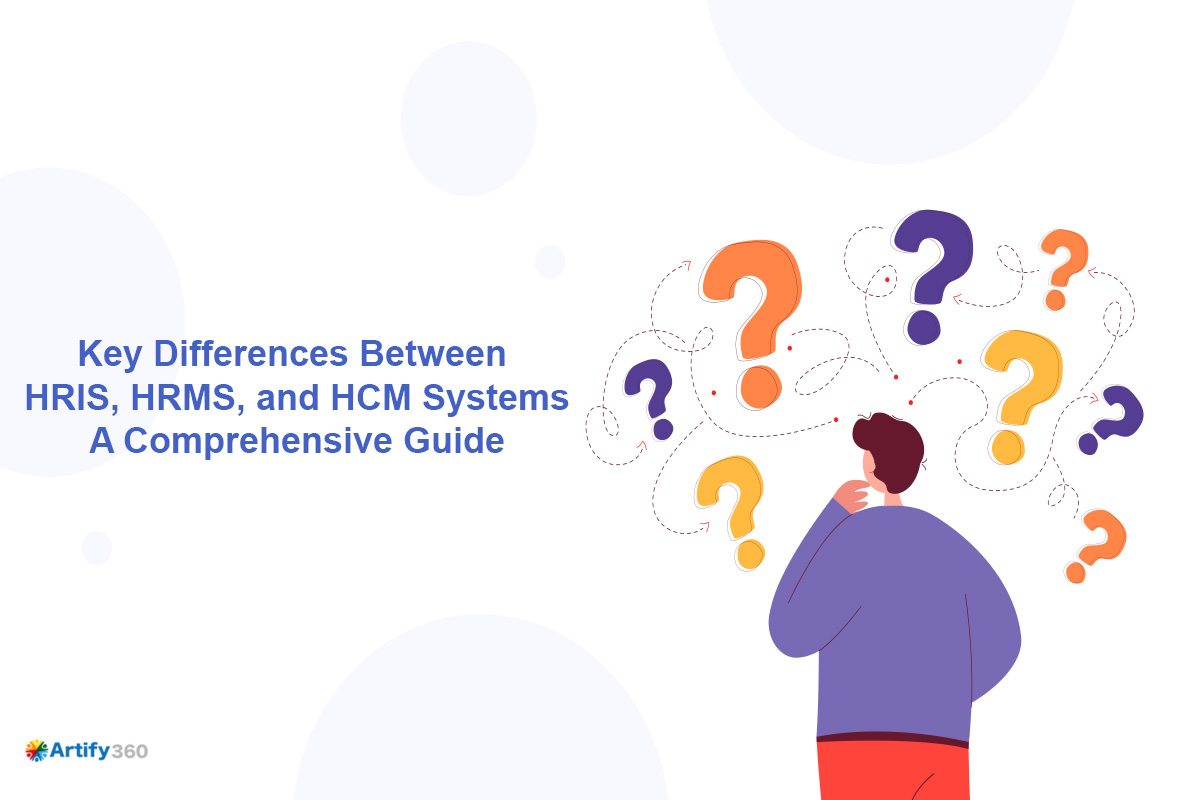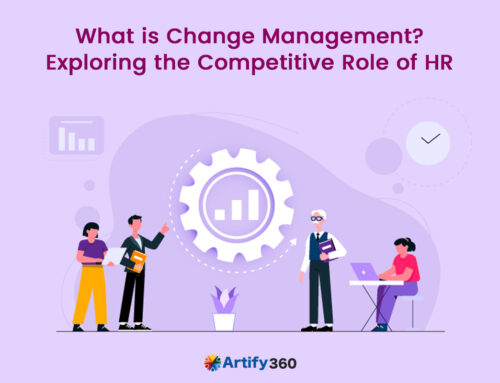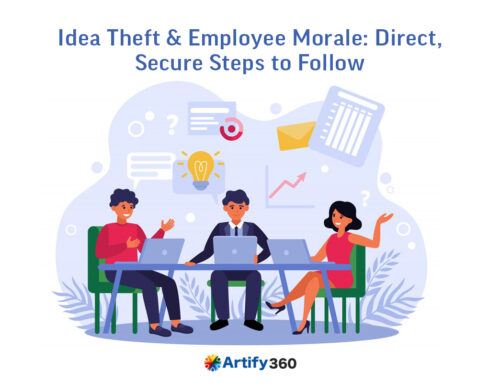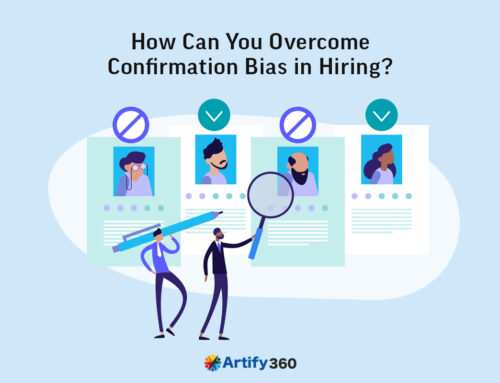HR software systems have been around for more than six decades. Though the application and use cases have drastically changed over the years, organizations have known the significance of HR solutions for a long time now. What sets it apart from other digital service solutions is its execution of core operational strategies for the upliftment of an organization.
Various iterations of HR cloud software have happened over time. In the initial days, HRIS was the most prominent. Then, it changed to HRMS solutions, which again gave way to the HCM system.
This post aims to clarify the vivid details of all the HR software systems, including HRIS, HRMS, and HCM. It helps you analyze the different use cases and select the solution that best matches your business.
The World of HRIS, HRMS, and HCM Services
HR software systems are necessary to carry out a streamlined workflow of business operations without the organization struggling to meet its end goals. You can carry out 15 or more HR module functions with an end-to-end solution in the category.
For a newbie, the HR software domain may seem a bit complicated. But once you adapt to the workflow and in-built strategies, it is a piece of cake.
Digital HR solutions boost several functions of human resource management, like employee engagement, administrative and operational tasks, exclusive and personalized resource management, and policy implementation on HR/compliance norms. HRIS, HRMS, and HCM are the top 3 most discussed among the HR solution systems.
Human Resource Information System (HRIS) is the ideal platform where data entry and processing take center stage. Human Resource Management System (HRMS) is functional in creating a portal for all operations management activities in the organization.
The Human Capital Management (HCM) system, the more advanced of the three, is the one that takes care of all employee-related tasks. It gives more weightage to the human aspect and less to the resource or investment terms.
Proper guidance is necessary for you to understand the role of each sophisticated technology in your organization. You should consistently evaluate and upgrade your business model to meet the changing market demands and requirements. Only valid, functional HR software that aligns with the above can help you reach the maximum potential for your human resources division.
Distinguishing Points – HCM vs. HRIS vs. HRMS
To differentiate and understand the core differences between HRIS, HRMS, and HCM, consider the following pointers and their impact on each category.
Popularity and Potential
It is a bit tricky to understand this part, as what makes a software platform popular with one taker won’t be the same with another. The potential of a software solution also varies by industry and business model served. Some overlapping features may exist in the potential of each system, but seasoned personnel can distinctly clarify those with ease. Based on this index, HCM occupies more weightage over HRMS and HRIS.
Task Management
The usability of HR systems varies by platform. The task management function of HRMS is different from that of HRIS and HCM. For complete data analysis in organizational workflow, HRIS systems software offers the optimum solution.
HRMS is the best for seamless integration of different channels and tasks. When it comes to HCM, its biggest use case lies in complex HR management and multi-tasking functions.
Feature List
The feature list for HCM will be more compared to the other two categories. It owes to the fact that the cloud-based system is the most recent of the three and will include more advanced, digitized functions. HCM also possesses the advantage of options to include for later as it will be more flexible to operate in a completely digital environment.
End-user
The target consumers of each platform vary by size and industry. HRIS analyst services are mostly preferred for small companies or smaller divisions in big firms. HRMS is beneficial for middle-range companies serving any industry. If your organization is a big corporate entity that engages in multi-tasking operations and brand-building strategies, then HCM is the way to go.
Benefits and Advantages
The benefits of each HR system category are unique, and its impact depends on how well the particular service appeals to your organization. It’s pointless to compare the merits of HR software systems for the same business model. The idea here is to find the one that suits your organization, study its advantages, match them effectively, and operate the desired system efficiently.
Limitations
Every software suite has its own set of demerits. Knowing about them in advance is important to deciding the solution that works best for you. For HRIS, the limitation is that it cannot integrate well with other systems and workflows owing to its age and structure.
HRMS is known for its integration feature, but the process-oriented modules take away from the much-appreciated human touch and focus more on system formalities than value addition. HCM covers the above issues, but it can be too much for new takers. The feature list is overwhelming and may not be compatible with traditional yet vital HR segments.
Application
The application of HCM is more into talent management, data analytics, and higher administrative-level operations. HRIS focuses more on its execution of data-based strategies and tracking of employee information. In HRMS, the primary onus is on employee engagement activities at the HR level. The applications and their impact can be changed as per personalized requirements, but the base models of each software suite will remain the same.
Functions Served
For managing large data sets, it is better to rely on HRIS solutions. They offer the best data management modules compared to the other two. HRMS, owing to its transparency feature, is perfect for centralized and report-generation-based HR activities. In HCM, modern digital technologies and innovations are adopted, paving the route for the usage of Artificial Intelligence (AI), Machine Learning (ML), Big Data Analytics, etc.
Components Included
This point refers to the numerous components of strategic best HR management systems software. For HCM, the major HR segments are employee management, recruitment/hiring, and administration of benefits.
HRMS relies mainly on resource management, time management, payroll management, and talent optimization. HRIS is commonly applied to personal data tracking of employees. It can also create standardized workflows.
Future
The future looks bright for all three domains. In HRIS, more modules will be developed based on techniques of resource analytics. Its future will mean fewer stand-alone solution provisions and more integration concepts.
HRMS is going to pick up fully under the cloud computing technology. As for HCM portals, the already digital versions will undergo even more digitized implementations and representations.
How will I Select the HR Software for My Organization?
It’s a bit tricky to find and employ an HR software system that vehemently supports your organization’s vision. For larger organizations with more employee strength and multiple branches, HCM is preferred. HRMS works best for mid-level companies and firms in the growing stage.
HRIS systems are suitable for both small and large-scale companies, with the difference showing in the volume of collected data. Irrespective of your selection, organizations show an 80% improvement in their relationship potential between employee engagement and incorporation of HR technology.
Rather than opting for a particular HR system based on various organizational filters, the ideal choice here is to select a software product that best matches your HR needs. Once it is selected, ensure space for personalization of the SaaS product. It can be done with the help of requirements-gathering tools and resources available in the market.
Some of the core values that you should consider when choosing HR software are usability, responsiveness, adaptability, process-oriented working, transparency, centralized model, trust, platform support, resource management, productivity, engagement potential, etc.
Helpful Tips Regarding Multiple HR Software Systems
Chances are you may opt for more than one HR system in your organization. This would mean the adoption of multiple modules of HR processes as part of different portals/platforms. It may prove to be beneficial or a lag at times. Listed below are some tips to understand how multiple HR software system works.
- You need to know about your company’s HR needs first. Put together a priority list and work on the tools that will serve your interest. Make sure that you only go for the system solutions that apply to the specific HR needs.
- You have the choice to pick one solution that closely meets your company’s requirements. Even though it is not final, you can build from there or add customized modules to this existing solution.
- Be aware of the constantly evolving digital transformation industrywide. When you go for an HR solution, it is even more important to analyze the future scope and potential of that service suite than the feature provisions that it offers in the market.
- Do not forget the basics of traditional HR management, cloud computing solutions, digital services, or innovation technology guidelines when choosing an HR system for your organization.
- While comparing the key parameters of HRIS, HRMS, and HCM meaning for your company, educate yourself on the merits and limitations of each platform. If you check the pros alone and ignore its cons, you may be headed for disappointment in the long-term business plan.
- Seek external help if possible. It is better to connect with technology and innovation experts, product evangelists, software specialists, and HR thought-leaders to identify the optimum HR software for you. Even on product selection, you may receive advice from senior internal staff to get the best results.
Implementing Artify 360 HR Software to HRMS, HRIS & HCM Platforms?
Artify 360 is a popular and proven HR payroll software solution that helps with numerous human resource functions in organizations, projects, and sectors. Some would equate Artify 360 to an HRMS solution. Some may call it an advanced HCM system. Modules exist in Artify 360 that correspond to a company’s HRIS software system requirements.
It is hard for us to categorize a well-crafted cloud HR software system service like Artify 360 in one specific niche. The personalized approach of this SaaS suite makes it endearing to projects and organizations of any size, style, operation mode, or area of expertise.
Watch this space for more on the HR software system that received rave reviews and testimonials in the HR domain. You can try the demo version of the service by reaching out to us here.






